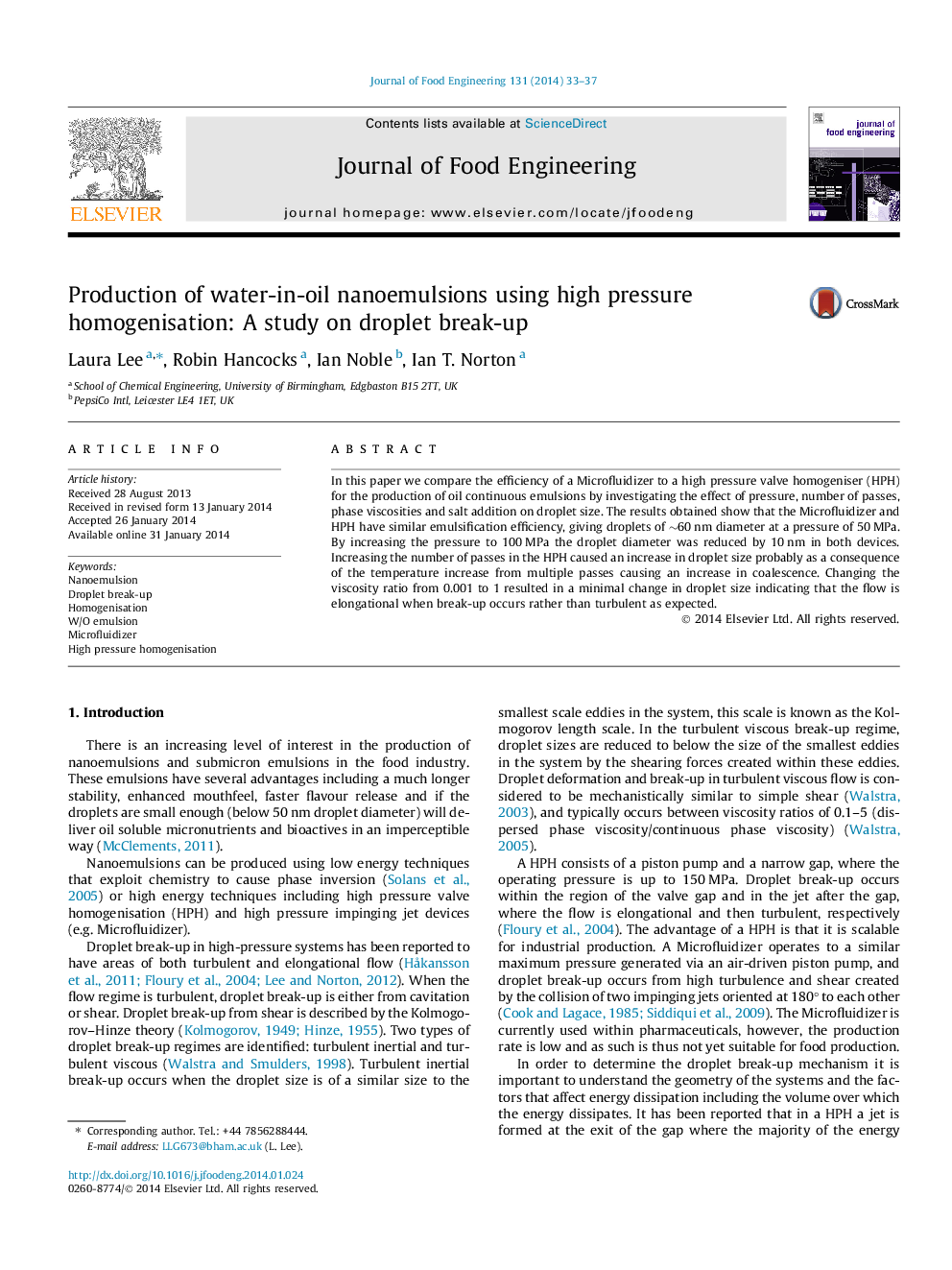| Article ID | Journal | Published Year | Pages | File Type |
|---|---|---|---|---|
| 6665846 | Journal of Food Engineering | 2014 | 5 Pages |
Abstract
In this paper we compare the efficiency of a Microfluidizer to a high pressure valve homogeniser (HPH) for the production of oil continuous emulsions by investigating the effect of pressure, number of passes, phase viscosities and salt addition on droplet size. The results obtained show that the Microfluidizer and HPH have similar emulsification efficiency, giving droplets of â¼60Â nm diameter at a pressure of 50Â MPa. By increasing the pressure to 100Â MPa the droplet diameter was reduced by 10Â nm in both devices. Increasing the number of passes in the HPH caused an increase in droplet size probably as a consequence of the temperature increase from multiple passes causing an increase in coalescence. Changing the viscosity ratio from 0.001 to 1 resulted in a minimal change in droplet size indicating that the flow is elongational when break-up occurs rather than turbulent as expected.
Keywords
Related Topics
Physical Sciences and Engineering
Chemical Engineering
Chemical Engineering (General)
Authors
Laura Lee, Robin Hancocks, Ian Noble, Ian T. Norton,
